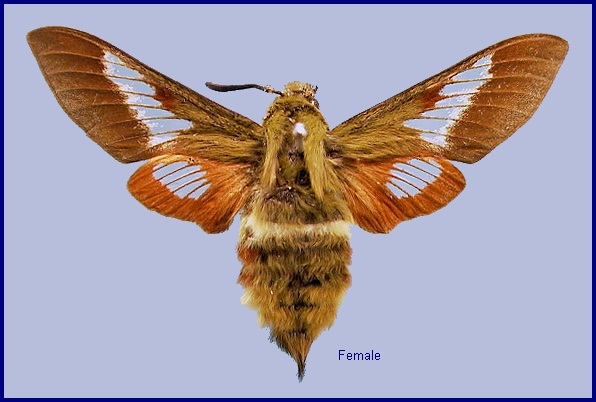
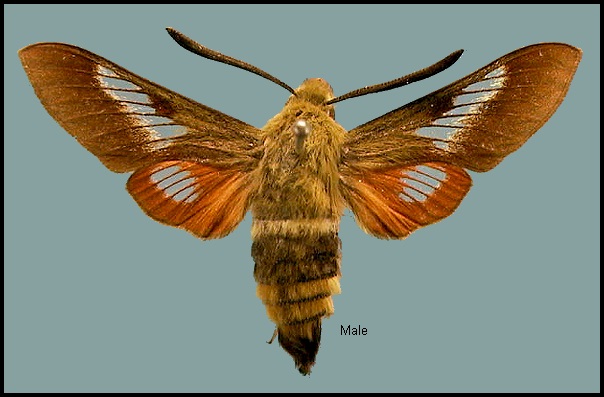
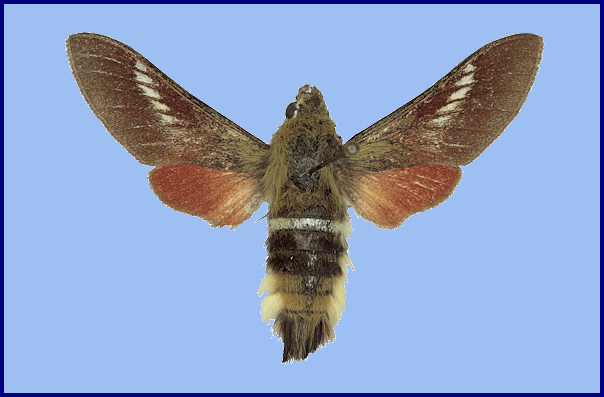
Hemaris ducalis Staudinger, 1887, Stettiner Entomologische Zeitung 48: 66. Type locality: [Uzbekistan,] Namangan.
Synonym. Macroglossa ducalis Staudinger, 1887.
Synonym. Macroglossa temiri Grum-Grshimailo, 1887.
Synonym. Hemaris ducalis efenestralis (Derzhavets, 1984).
Synonym. Hemaris ducalis dantchenkoi Eitschberger & Lukhtanov, 1996.
Synonym. Hemaris ducalis lukhtanovi Danner, Eitschberger & Surholt, 1998.
Note: Subspecies dantchenkoi described by Eitschberger & Lukhtanov (1996) from central Afghanistan is untenable as it is a redescription of a high-altitude montane form from Tajikistan, namely f. efenestralis Derzhavets (1984).
Note: The validity of Hemaris ducalis lukhtanovi Danner, Eitschberger & Surholt, 1998 as a separate subspecies remains open to doubt (Kitching & Cadiou, 2000). Both normal and lukhtanovi-like forms fly together in central Afghanistan (Bamiyan, Yakawlang district, 34°48'2.80''N 67°11'3.37''E), indicating that they cannot be treated as distinct subspecies.
Wingspan: 40--50mm. Distinguishable from all other species of Hemaris by the off-white dorsal band on abdominal segment three. Degree of development of the transparent areas on both the forewing and hindwing variable. Arolium absent. Hindwing upperside entirely orange, apart from the transparent areas, contrasting with the more brown coloration of the forewing upperside. Differs from Hemaris dentata in having the forewing almost fully scaled, the third abdominal segment yellowish white with any brown being confined to lateral tufts, and pulvillus absent.
A high-altitude montane form, originally described from Tajikistan (f. efenestralis), has the hyaline windows of the forewing partially obscured by dark scales on the side towards the outer wing margin; the windows are completely obscured on the hindwing. This is similar to the Ziarat and Gilgit specimens from Pakistan (f. lukhtanovi), where the forewing hyaline windows are barely visible, being almost totally obscured.
According to Rothschild & Jordan (1903), the male genitalia are rather distinctive; left valva more slender than in Hemaris tityus, approaching that of Hemaris fuciformis; process of left sacculus represented by a conspicuously spinose hump; right valva ventrally slightly emarginate beyond middle; process of right sacculus long, slender, slightly club-shaped, upper surface in apical half armed with long spines. Juxta rather densely covered with long hairs apically; phallus rather long, not very sharply pointed.
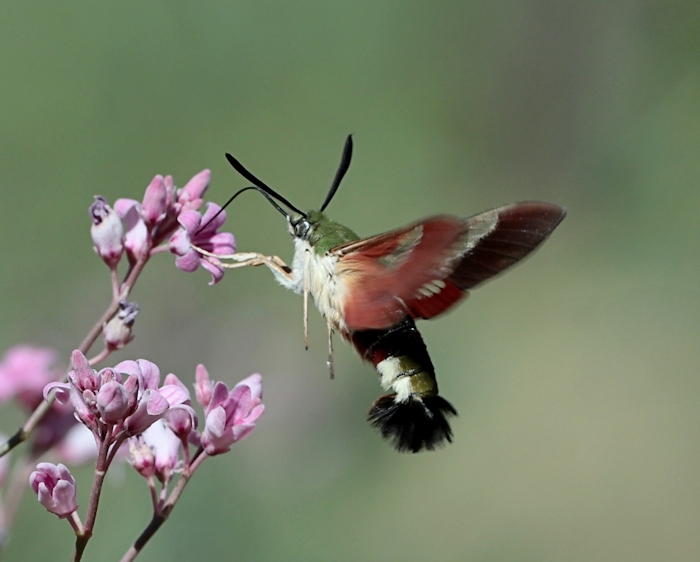
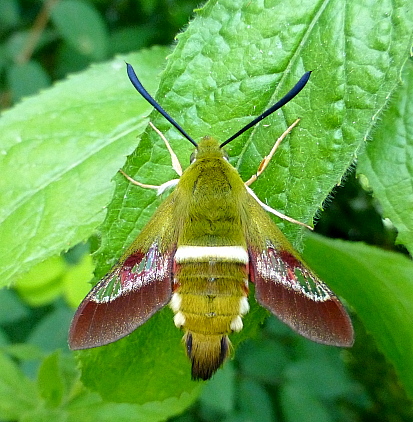
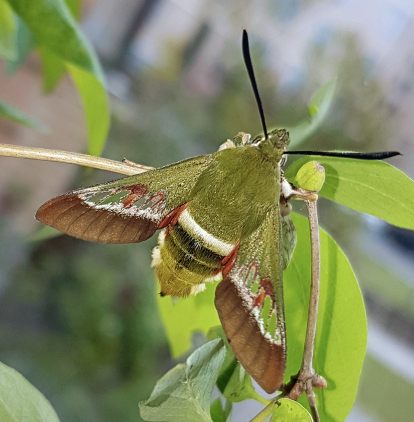
Diurnal. Found in woodland and scrub, rarely below 2000m and occurring up to 4000m. In western Mongolia at 2100m (Yakovlev and Doroshkin, 2005). In eastern Kyrgyzstan (Dzhalal-Abadskaya) at 1300m (A. Sochivko, pers. comm. 2011). In central Afghanistan (Bamiyan, Yakawlang district, 34°48'2.80''N 67°11'3.37''E) at 2900m.
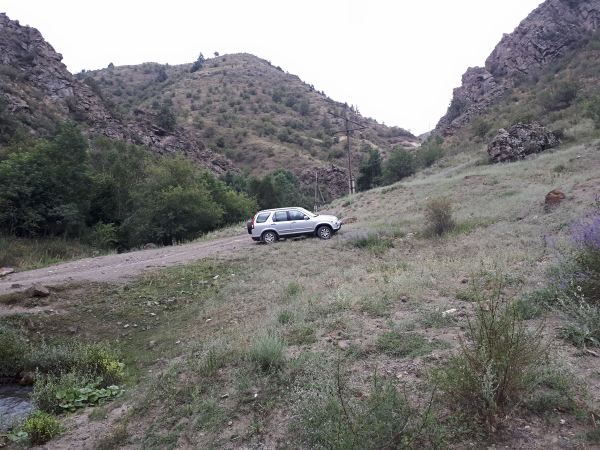
China: 15.v (Baicheng); vi (Xinjiang, 6200m); 5.vii (Shihezi area); vii-viii (??Sanka). Mongolia: 21-23.vi (Khovd Province); 14.vii (Khovd Province).
OVUM: As per Hemaris fuciformis, but a little bigger and almost spherical. Often, small, isolated plants only 40-50 cm in height are preferred oviposition sites rather than large bushes (Serge Yevdoshenko, pers. comm. 2015). As with other species of Hemaris, many eggs of this species are infected by micro-wasps (Serge Yevdoshenko, pers. comm. 2015).
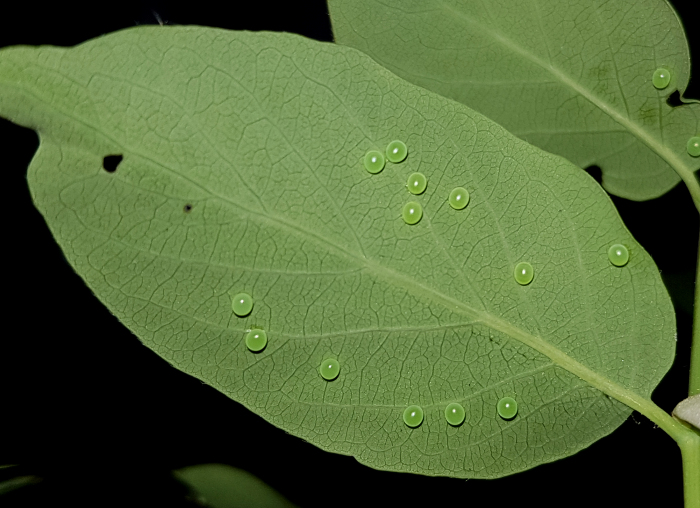
LARVA: Full-fed 33--42mm. Newly hatched larvae are yellowish and covered with noticeable hairs (Serge Yevdoshenko, pers. comm. 2017). According to Degtyareva & Shchetkin (1982), the fully-grown larva resembles that of Hemaris fuciformis: dorsally and laterally pale green (in the green form) with a prominent yellowish white dorso-lateral line running from the first thoracic segment up to a slightly curved caudal horn; however, unlike Hemaris fuciformis, Hemaris ducalis bears a line of pale yellow V-shaped markings dorsally, one per segment but less pronounced on the thoracic segments, all pointing caudad. Ventrally, reddish brown with a fine, light yellow ventro-lateral line separating the dark lower surface from the green sides. Where this line crosses the prolegs it thickens and becomes darker; true legs brownish cream. Horn 5mm long, violet-black at base and whitish green or cream towards the tapering tip. As in Hemaris fuciformis, the rounded head is bluish grey and offset by a cadmium-yellow collar to the first thoracic segment. A line of the same colour also edges the anal flap. The entire head, body and horn are covered with pale tubercles, light yellow dorsally, mostly becoming cream below the dorso-lateral line. Oval spiracles reddish brown and cream. There is also a light brown form (Serge Yevdoshenko, pers. comm. 2017).
Many L1-L3 larvae may be infected by species of Cotesia in Kyrgyzstan, but by L4 most are free of these. Final instar larvae are also usually free of parasitoids in 99.99% of cases (Serge Yevdoshenko, pers. comm. 2015; 2017).
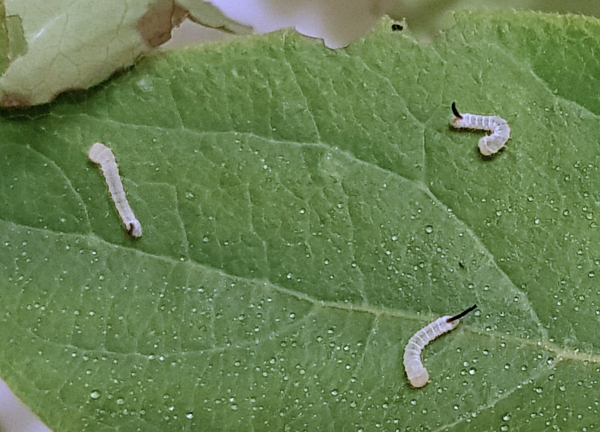
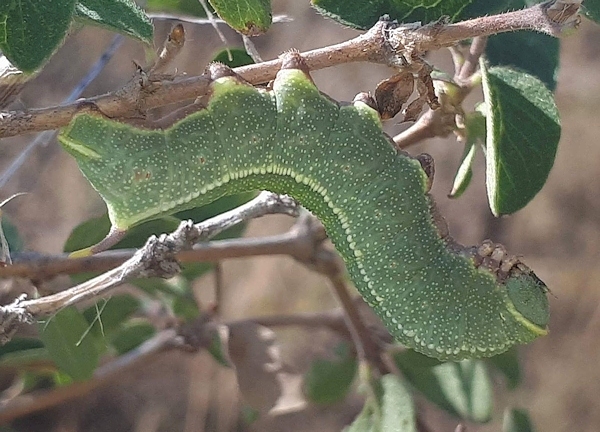
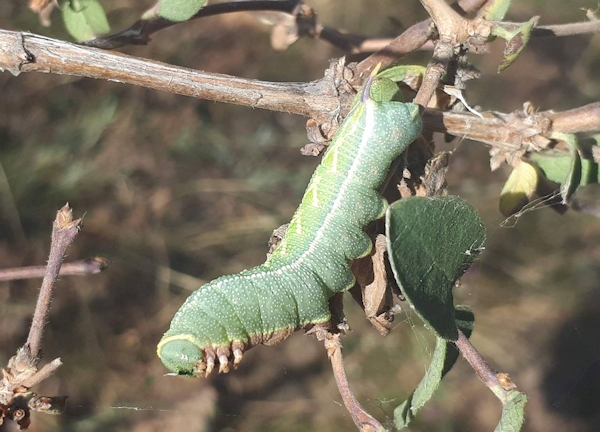
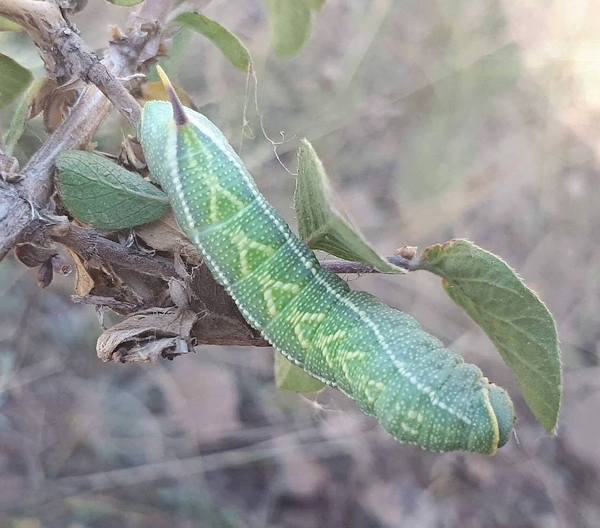
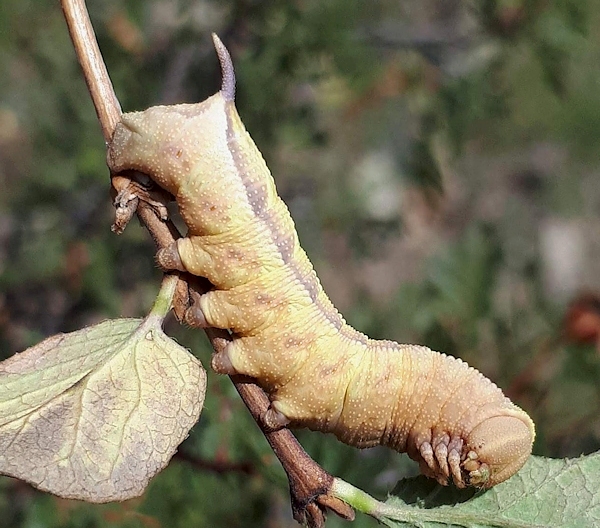
PUPA: 37mm. Blackish brown, rugose, very similar to that of Hemaris fuciformis. The overwintering stage.
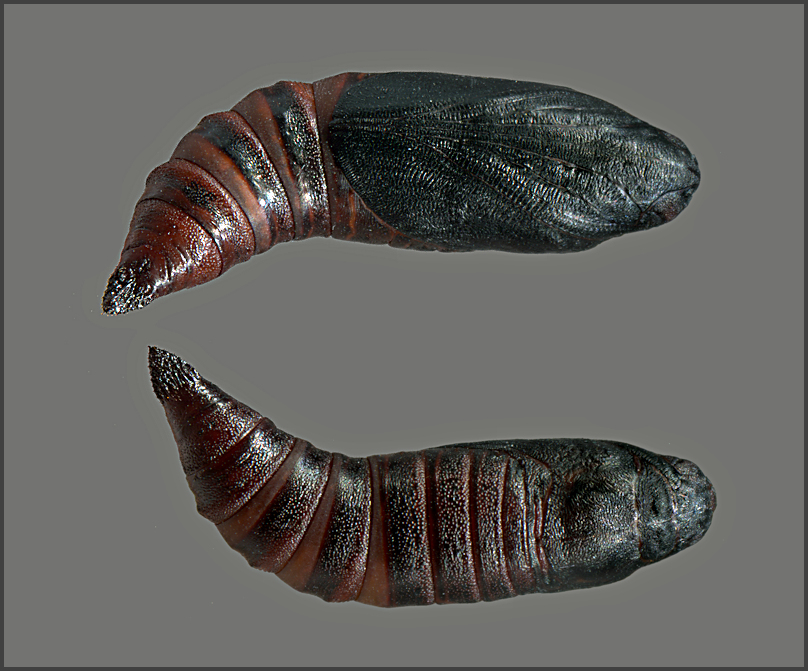
Larval hostplants. Unknown in China but recorded in Tajikistan on shrubby Lonicera growing in the understorey of spruce forests (Degtyareva & Shchetkin, 1982), such as Lonicera korolkowii, Lonicera nummulariifolia, Lonicera seravschanica and Lonicera stenantha (Danner, Eitschberger & Surholt, 1998). However, the main host in the Chatkal Mountains, Kyrgyzstan, appears to be Zabelia corymbosa (Regel & Schmalh.) Makino [syn. Abelia corymbosa; Linnaea corymbosa] (Serge Yevdoshenko, pers. comm. 2019).
Unknown.
China: Xinjiang (Baicheng, 2400m; ??Sanka, Tian Shan, 2500-3500m; Shihezi area).
Mongolia: Khovd Province (Bulgan River basin, Dod-Naryjn River valley, 1500-1700m; Bulgan River basin, middle stream of River Ulyastain-Sala, 2100m).
The Gissar Mountains of southern Uzbekistan (Dubatolov, [1999]), southern and eastern Kazakhstan up to the Altai Mountains (Yakovlev & Doroshkin, 2005; Shovkoon, 2015), Tajikistan (Grum-Grshimailo, 1890; Eitschberger & Lukhtanov, 1996), Kyrgyzstan (North Kirgizsky Mountains; Tian Shan (20 km E Kerben/Karavan, Kuyuk-Sai River; Chatkal Mountains)), the Bulgan-gol basin of western Mongolia (Yakovlev & Doroshkin, 2005), the Chinese portion of the Tian Shan, the mountains of south-western Xinjiang Province, China (several specimens in NHMUK), the Pamirs, northern and central Afghanistan (Ebert, 1969) to Ladakh (Smetacek & Kitching, 2012). Also Gilgit and Ziarat, Pakistan, as an isolated population at 2400-4000m and, maybe, as a separate subspecies (Danner, Eitschberger & Surholt, 1998; Rafi et al., 2014).
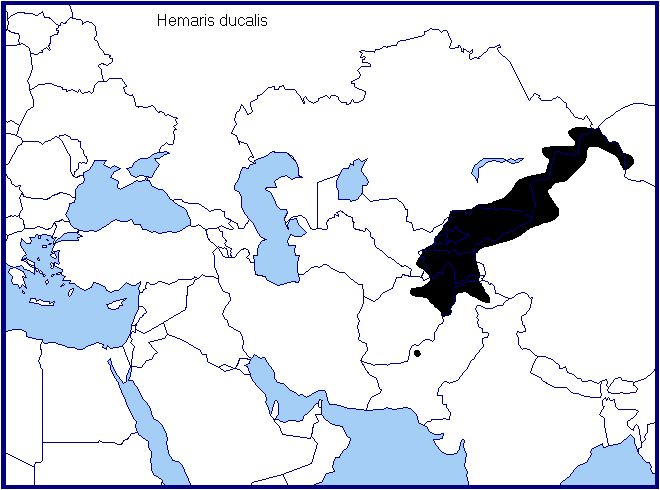
Holarctic; western Palaearctic region. Pleistocene refuge: Monocentric -- Turkestan refuge.
 Return to Sphingidae of the Eastern Palaearctic species list
Return to Sphingidae of the Eastern Palaearctic species list